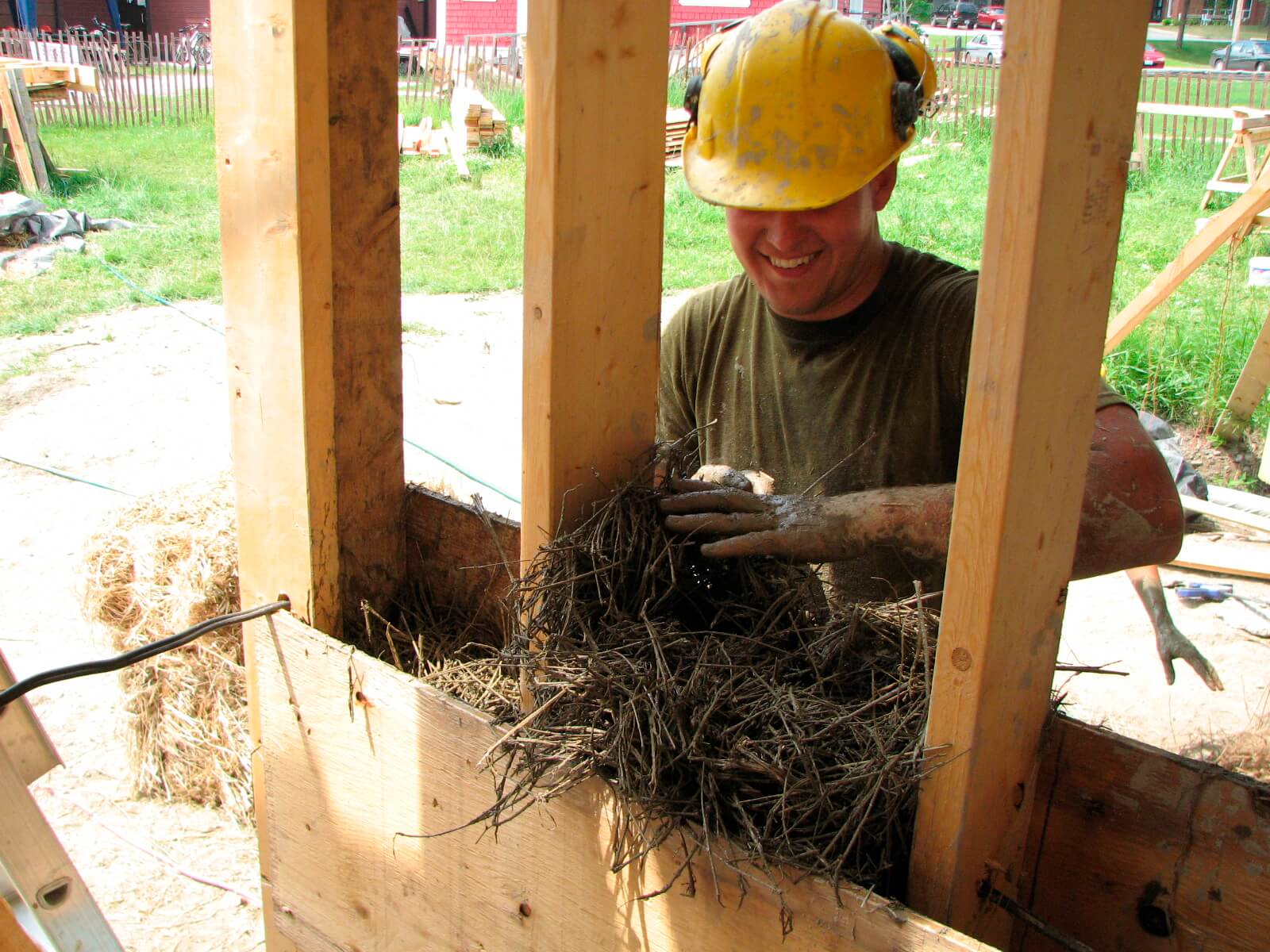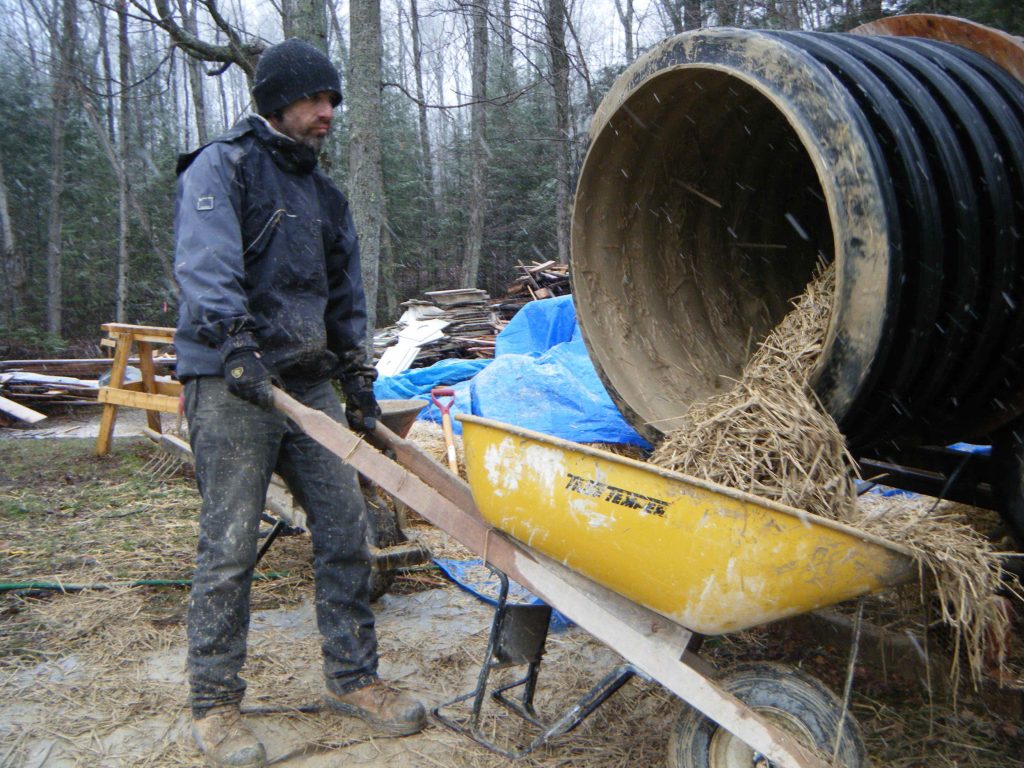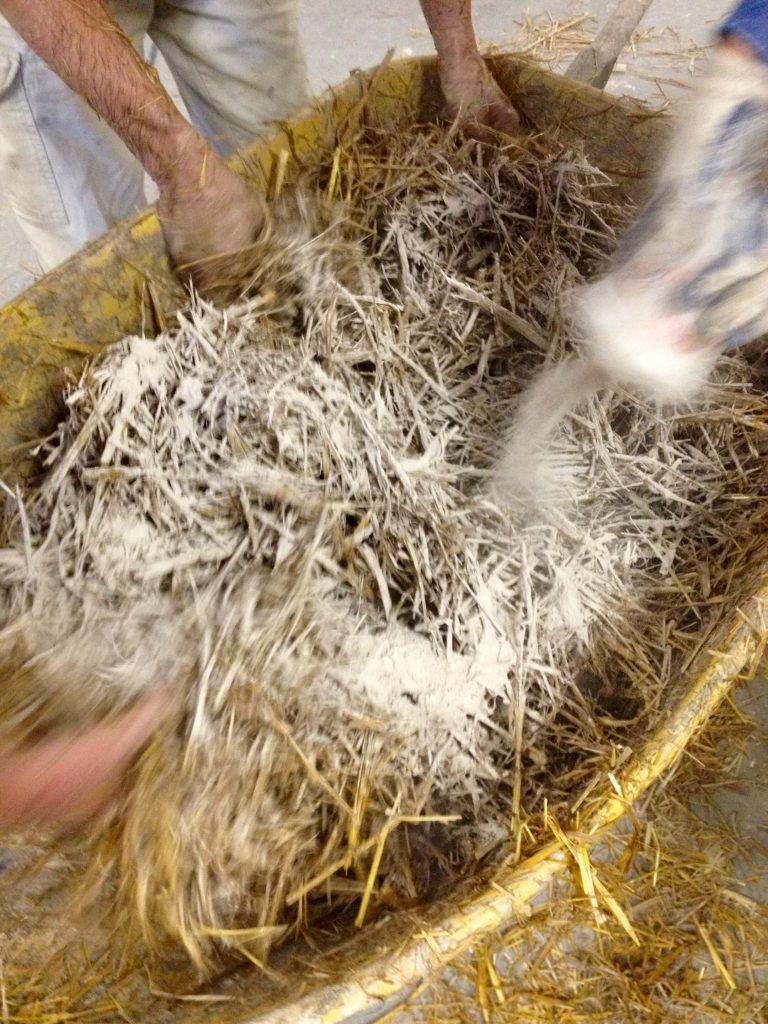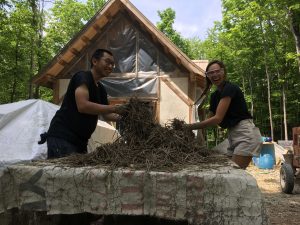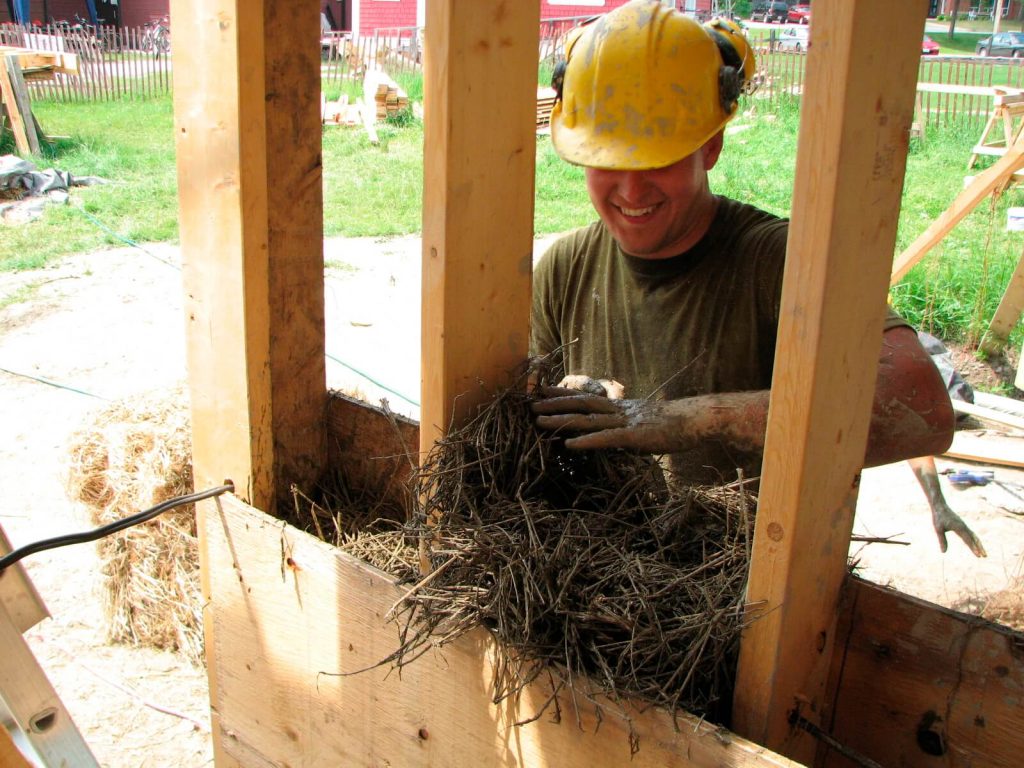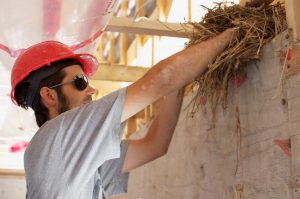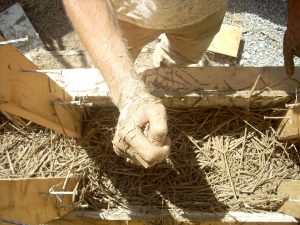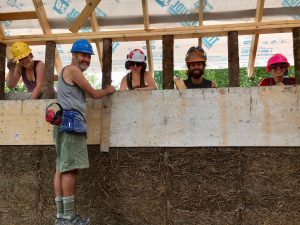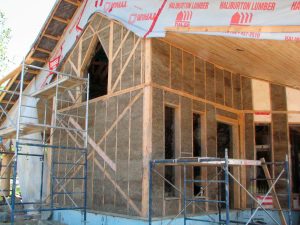On April 10, a workshop at Endeavour led participants through the theory and practice of making wall insulation from light clay straw (also known as straw/clay, slipstraw, or EcoNestTM).
This is an insulating technique we’ve used numerous times on building projects at Endeavour, and we appreciate the extremely low carbon footprint, simplicity, lack of toxicity and simple installation process of this insulation.
Clay slip versus dry mixing
During our workshop, we used the typical mixing approach for light clay straw insulation: mixing our clay into water until we had a thick, “melted milkshake” consistency. This slip is then poured onto the straw and mixed in until the slip evenly coats all of the straw, so that a handful of straw can be squeezed into a shape that reasonably retains its shape. Whether mixed by hand, in a mortar mixer or in a purpose made straw/clay tumbler, this is how we and other straw/clay builders typically prepare the insulation.
For this workshop, we also tried a mixing technique more similar to that we use for hempcrete. When mixing hempcrete, the hemp hurd and the binder are added together when dry, mixed until the powdery binder coats all the hemp, and then lightly misted with water to make the binder sticky. So we tried sprinkling dry powdered clay over the straw, stirring, and then adding water. This didn’t work so well, as the clay powdered sifted down through the straw and ended up at the bottom.
Dry mixing, version 2
For our next batch, we reversed the process and gave the straw a light misting of water and then sprinkled in the clay powder and stirred. This seemed to work very well, as we ended up with a clay coating on the straw that was much stickier than slip mix and allowed the clay/straw to be packed into the forms easily. This process used 25-50% less clay, and more importantly 25-50% less water, which should reduce drying time in the wall dramatically. Having placed both slip-mix and dry-mix side-by-side in the same wall system, there was no appreciable difference in quality in the finished appearance of the insulation, but the dry-mix showed about 25% moisture content on our moisture meter, and the slip mix was up at 36%. Given that slow drying time is the main hang-up for straw/clay insulation, we will use this technique in the future to reduce the wait for the insulation to dry!
